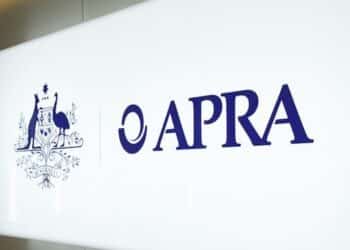Yesterday, ifa reported comments by FPA chief executive Dante De Gori that indicated his organisation now derives as much as 95 per cent of its revenue from the membership, meaning just five per cent comes from transactions with commercial partners including financial product providers, licensees and life insurers.
In response, Peter Johnston, executive director of the Association of Independently Owned Financial Professionals (AIOFP), told ifa the FPA’s business model is irrelevant given the dominance of institutionally-aligned advisers within its membership – itself a latent form of political influence.
“Whether the revenue comes directly from the institutions or via their vertically integrated distribution networks, it is still money sourced from the [institutionally-aligned] majority of its membership,” Mr Johnston said.
“Many institutions make it mandatory to be a member of the FPA to exert their commercial influence. It’s about time the ‘elephant in the room’ is exposed, the FPA represents the institutional faction – why even bother to portray themselves as anything different? It is an insult to the intelligence of the adviser community.”
Mr Johnston also questioned the 5 per cent figure offered by Mr De Gori, arguing that with the membership fees derived from institutionally-owned or aligned firms, alongside the event and education sponsorship deals, the figure is likely to be much higher in reality.
At the same time, he conceded that the FPA has “done some good work for the industry as a whole”, but added that it only supports adviser interests when they coincide with the interests of the major financial product manufacturers.
Mr Johnston also reiterated his previous argument that independent and non-aligned advisers that are members of the FPA and AFA are acting against their own self-interest.
“The recent LIF fiasco is a prime example where the presence of independent and independently-owned adviser members were used by the FSC, FPA and AFA to act against them with the politicians,” he said.
The AIOFP has long advocated that advice industry associations should be “homologous” i.e. that the respective groups should stick to their own patch, with the FPA representing the institutionally-aligned sector, AFA representing life and risk insurance specialists and AIOFP representing the independent and non-aligned community.




If the body that wants to represent advisers is making misleading statements what does that say about FPA credibility and that of its members ?
I have never witnessed a significant time/event where the FPA or its forbears have allowed professionalism to get in the way of commercial interests. Its about time there was some real journalistic clout to recognize this structural flaw and the consequent impotence of this professional body. I know of no other professional association that is so irrelevant.
Peter, I think your criticisms will carry a bit more weight once the AIOFP has it’s code of conduct approved by ASIC. Anyone who has even a passing acquaintance with the board and management of the FPA will know how ludicrous these (and other ) comments are. And to the editor: Yes it really has become tedious to read commentary about any association having a cheap shot at another.
Does anyone actually care about the respective professional bodies’ ‘codes of conduct’?
They are never enforced. We all know plenty of people in every association not following the code. They are designed to keep up appearances, nothing more.
This is exactly the problem with both the AFA and FPA as the LIF fiasco showed. Its not just about the sponsorship and funding by the FSC members, its the deals done to pay for and enforce compulsory membership by aligned advisers of these very same FSC members.
The AFA and FPA both showed that this meant more to them than doing the right thing for customers as well as independent risk advisers and showed that they were simply a pawn to be used by the FSC to get what they wanted. They are totally un-independent.
Perhaps Mr De Gori could state the exact percentage of FPA members that are aligned to members of the FSC and who is paying their fees together with the dollar size of funding received. Brad Fox of the AFA would never admit it regardless of how many times asked.
Seriously, these claims by the AIOFP are ridiculous. As a truly independent member of the FPA, I just wish the AIOFP would get on with representing its own members and stop worrying about other industry associations. Do you really expect our clients to respect the work that we do for them when the three associations that claim to represent us spend all their time slagging off at each other? Grow up!!
All the financial planning associations have serious shortcomings which have contributed to the profession being constantly under siege from regulators, the media, and opportunistic commercial competitors. The “keep quiet and don’t rock the boat” approach clearly hasn’t worked. It is long overdue for all the associations to have their faults aired and resolved, rather than continually swept under the carpet.
Did Dante disclose how much of the FPA’s revenue comes from grandfathered CFPs? I suspect this is an even greater conflict of interest that is undermining the FPA’s credibility with regulators and consumer organisations. It is also preventing the FPA from properly advertising those benefits of a real CFP that grandfathered CFPs don’t have. (Degree, postgrad level training and exam, compulsory ethics training).
How about downgrading the grandfathered CFPs and becoming a proper professional association FPA? Or are you more concerned about the potential loss of revenue?